Magnus Carlsen dominates day 2 in Cote D'Ivoire, moves to Rapid Elo of 2896!
After the Grenke Chess Classic 2019 talks about Magnus Carlsen breaching 2900 mark became very relevant. The World Champion is currently on 2875 on the classical rating list, but in rapid ratings he has moved all the way upto 2896! If Carlsen does manage to breach 2900, this won't be the first time as he has reached 2919 before. However, it just goes to show how he is dominating the chess world in all formats. The second ranked rapid player is Nakamura with an Elo of 2835! On day two of Cote D'Ivoire Rapid, which is the first leg of the Grand Chess Tour 2019, Magnus Carlsen continued with his dominance. He is currently on 10/12, followed by Nakamura on 8/12 and Wei Yi on 7/12. An illustrated report by Tanmay Srinath.
Cote D’Ivoire Day 2: Magnus opens up a two point lead on dramatic day

Today’s rapid games were sharper and more volatile, as the players looked to get a foothold on the top standings. Magnus Carlsen stood out again, with another 5.0/6 day (In rapid, points are doubled – two for a win and one for a draw) to open up a 2 point lead over Hikaru Nakamura, who recovered from his loss in the 5th round to stand as sole second with 8.0/12 and 3 rounds to go. Baseem Amin finally opened his account, with a loss, win and draw respectively, while Topalov’s and Nepo’s struggles for form continued as they formed the tailender group. A peek under the surface:
Round 4:
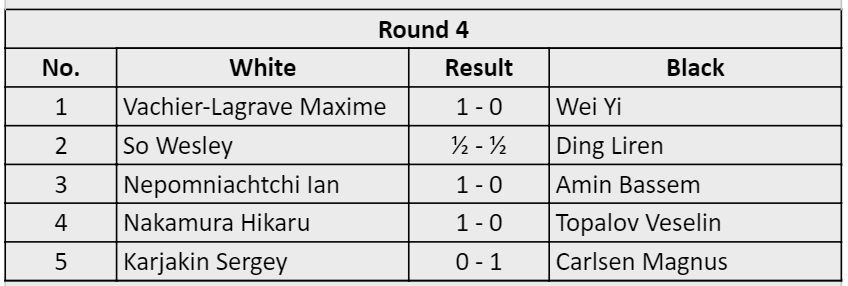
This round produced the most number of decisive results till now-4! Clearly the well rested players went for each other’s throats, and what we got were pure dogfights! The usual suspects managed to win their games, and we’ll start with MVL’s masterclass against Wei Yi.
MVL vs Wei Yi
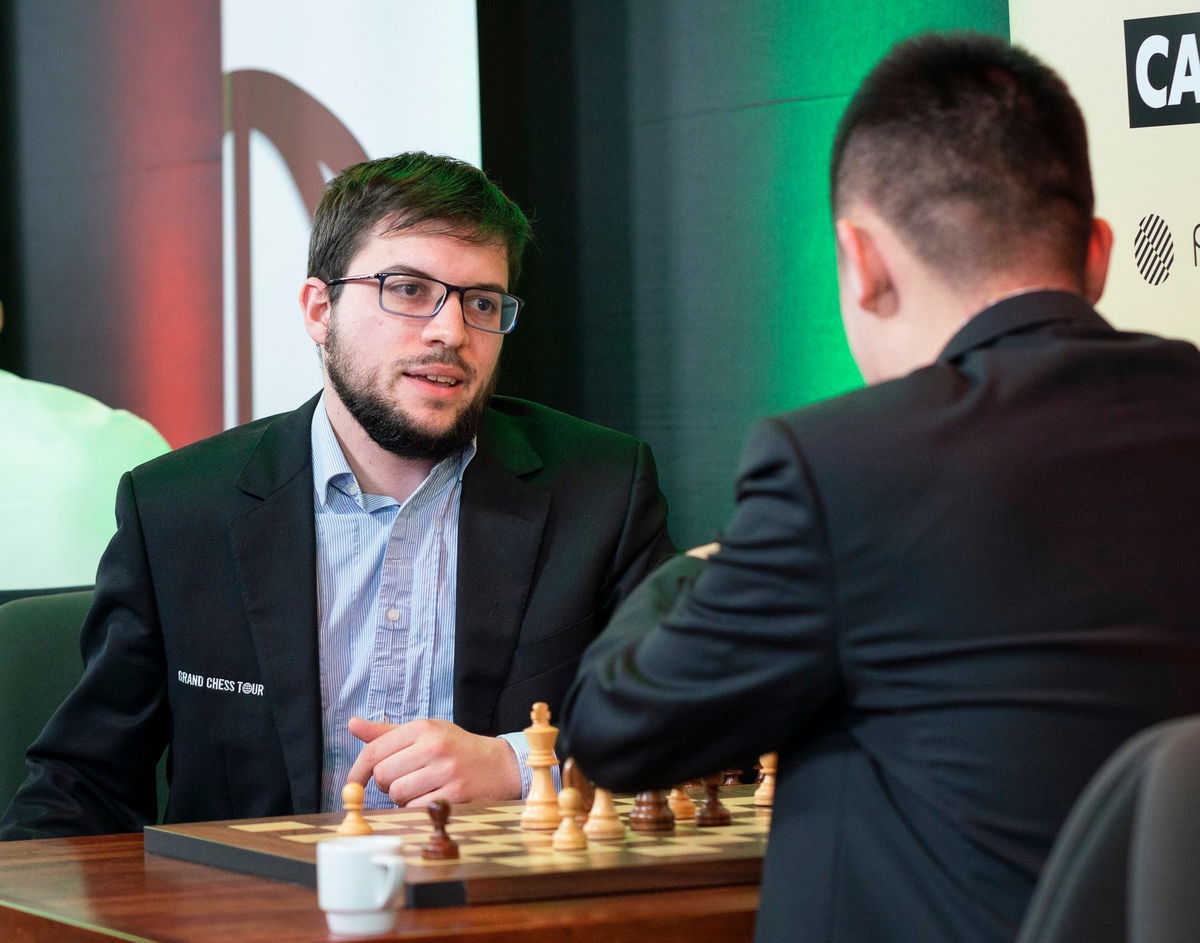
The game started as a 5.Nc3 Petroff, the most critical try for an advantage at the top level. The players went on an exchanging spree, and soon we reached a peculiar endgame, where White had the bishop pair and prospects of a more active king, but Black had counterplay against White’s shattered kingside pawns. The game was dynamically balanced, but easier for White to play. It was on move 27 that Wei Yi committed the decisive mistake.
To make the situation more interesting for the readers, solve the following position!
MVl-Wei Yi
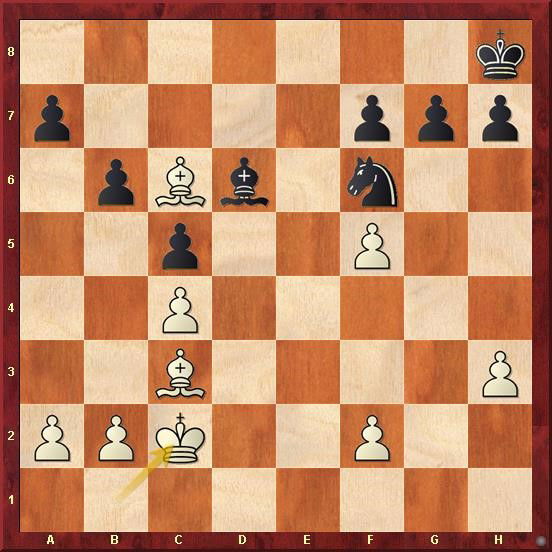
Answer: If you thought that Black needed to bring his king to the center immediately, then your thought process was the same as the super strong Wei Yi! Unfortunately for Wei though, 27...Kg8? is the decisive mistake! Why so? Because Black is aiming for passive defence, a strategy that usually never works against the two bishops and such an active king. Here, it just loses. Black had to play Nh5! Here, starting immediate counterplay against White’s pawns. The full line is given in the game annotations below.
Sergey Karjakin vs Magnus Carlsen
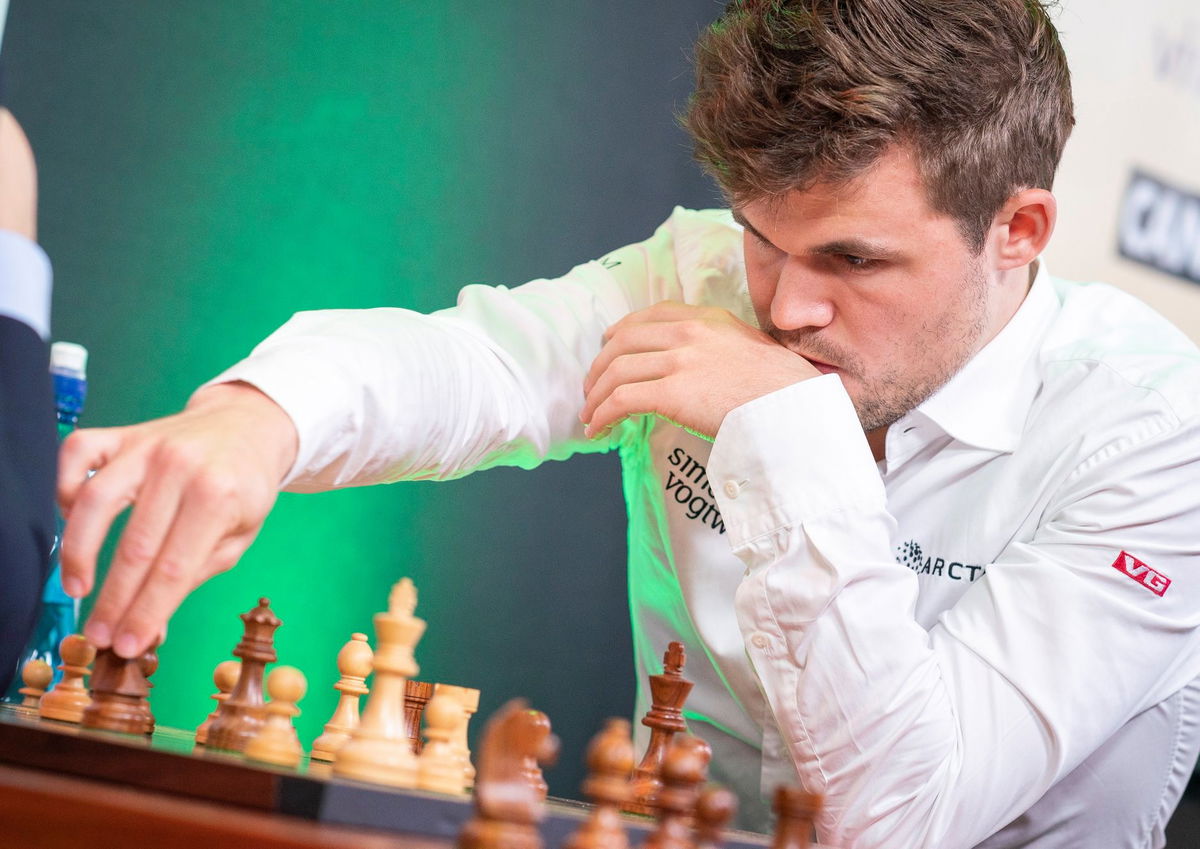
Moving on, Magnus Carlsen continues to win effortlessly against top level GMs. The World Champion has hit a new peak (or scaling new ones!) and his game shows variety and precision that we could only expect from the silicon monster. The person on the receiving end this time was the Russian Defense Minister Sergey Karjakin. The players discussed an odd Sicilian line that has suddenly become popular at the top level. As usual, Sergey got a decent position out of the opening as White. However, it wasn’t clear how White’s position could be improved further. A turning point arose on move 21 with White to move:
Karjakin-Carlsen
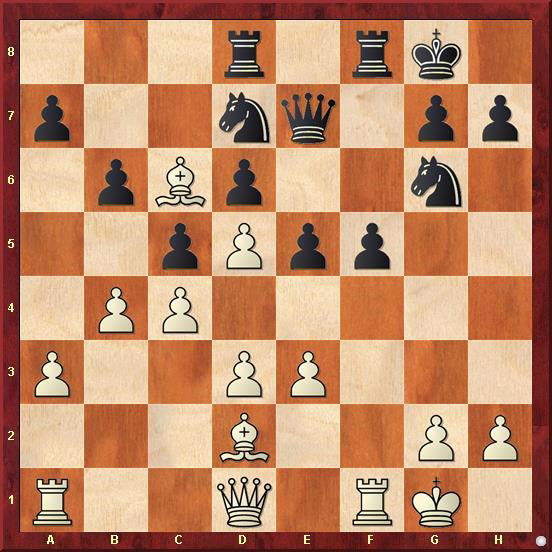
Sergey played the natural move Qa4, but this was in my opinion not the best. White chases the knight to where it wants to go (the kingside) and the queen has to waste tempi coming back to defend the king. Instead, e4! Takes the game into a Kings Indian Defense structure where Black should be fine, but so should White. After 21.e4! I believe that while Black might possess some short term initiative, it isn’t much, and if the game further opens up White’s bishops may have a thing or two to say. Here the scales tipped in Carlsen’s favour, and he never looked back!
Hikaru Nakamura vs Veselin Topalov
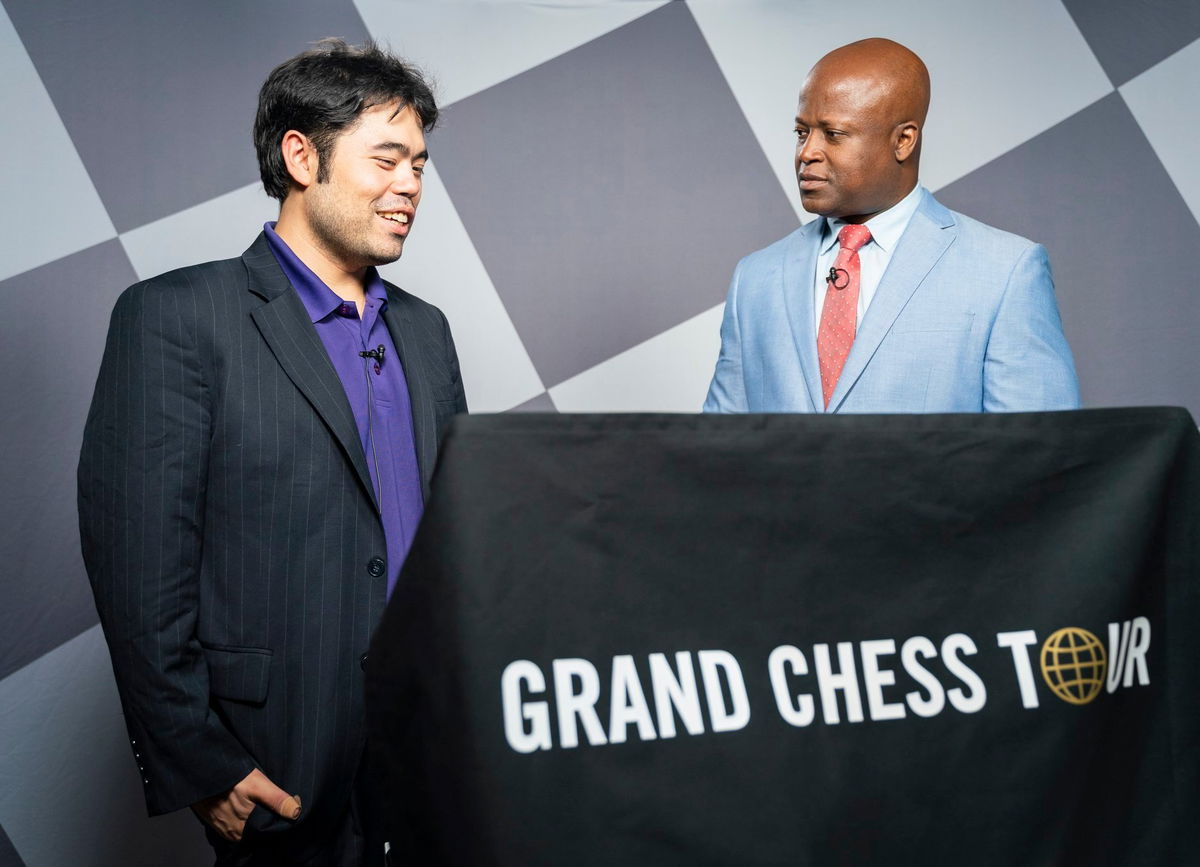
Nakamura-Topalov was an Anti Slav that started 1.Nf3 d5 2.e3!? a move order that made a lot of noise for the first time in 2016, when Karjakin used it to beat Anand in the Candidates. The e3 poison (as it is named by author Axel Smith in his entertaining book on the subject) was successfully neutralised by Veselin, and by move 18 Black had clear chances for an opening advantage:
Nakamura-Topalov

Here Veselin went for the peaceful Bxd4?! a serious inaccuracy that suddenly gave the initiative to White. In the game, Naka sacrificed an exchange temporarily to enter a rook and opposite coloured Bishops endgame two pawns up after Topalov went wrong, and soon won. Here however, had Veselin played Rad8!, the conclusion of the game would not have been so favourable for White. What is so good about this move? Firstly, it x-rays the d5 pawn and keeps it under watch (Qxd5 loses an exchange to Ba4!). Secondly, Black centralises his last inactive piece and is ready to start active operations. Once White moves his queen away (threat was a5 winning a piece), Black reroutes the d8 rook to c8, the e8 rook to d8 and has an excellent game.
Nepomniachtchi vs Amin
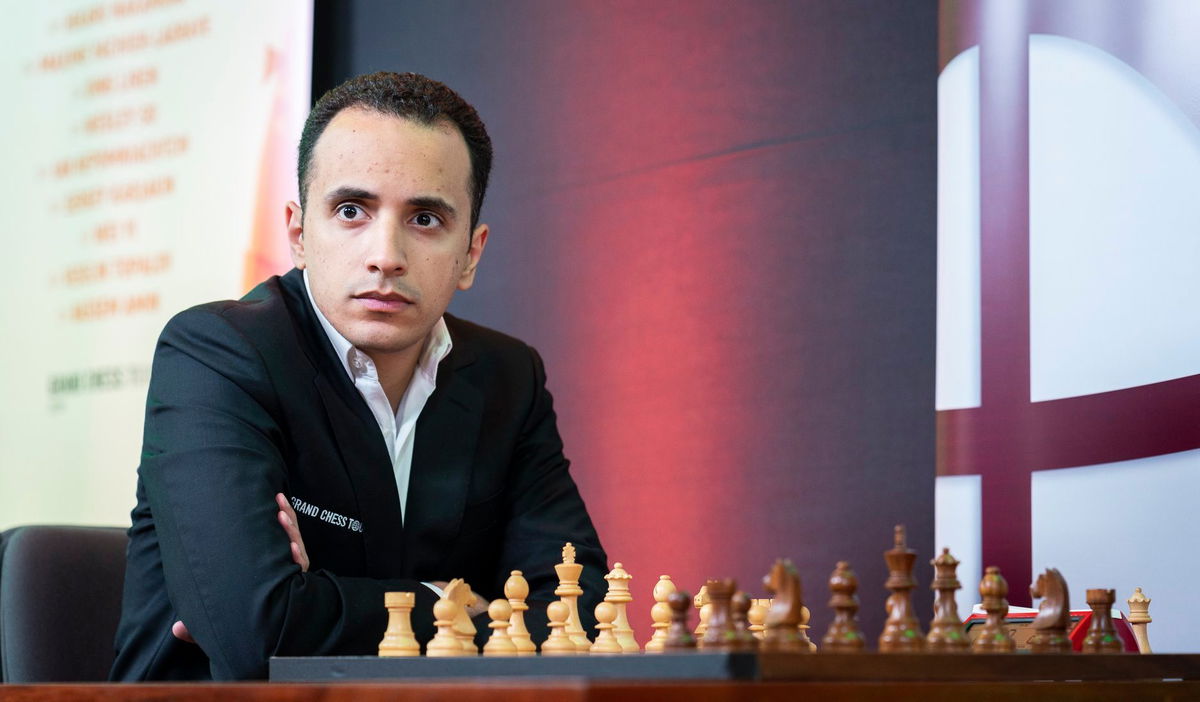
The last decisive game was Nepo-Amin. In a 6.d3 Ruy Lopez, Amin completely equalised, and it seemed to me that the draw is a fair result considering the position. However, an inaccuracy on move 25 changed Baseem’s fate:
Nepo-Amin
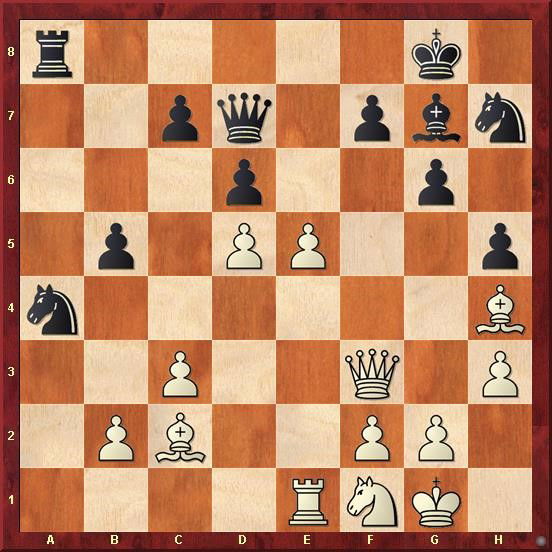
Here 25.dxe5 was the last throw of the dice from Nepo, and after the correct ...Bxe5! I am sure he would have liquidated completely to a draw. Instead, dxe5?! was the beginning of the end for Amin. White suddenly got chances after 26.d6! and soon exploited Amin’s inaccuracies to win a good strategic game.
Wesley So-Ding Liren was a closed Ruy Lopez sideline where White didn’t get much out of the opening (in the game). There was one moment where I feel Wesley could have improved his play:
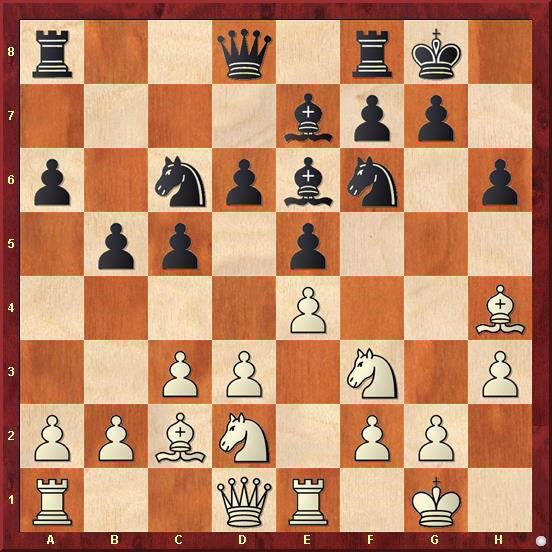
Round 5:
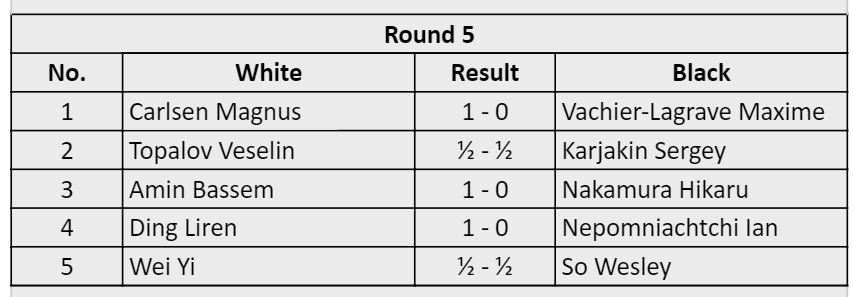
There were three decisive results, and all had a major impact on the standings. Magnus won a complicated Sicilian Najdorf against MVL. The opening was a 6. Be3 Ng4 Najdorf that was popularised by Anand-Kasparov duels. Magnus got a fine position out of the opening, but further mistakes from both sides meant that the players reached a balanced major piece endgame. It was MVL who made the final mistake though:
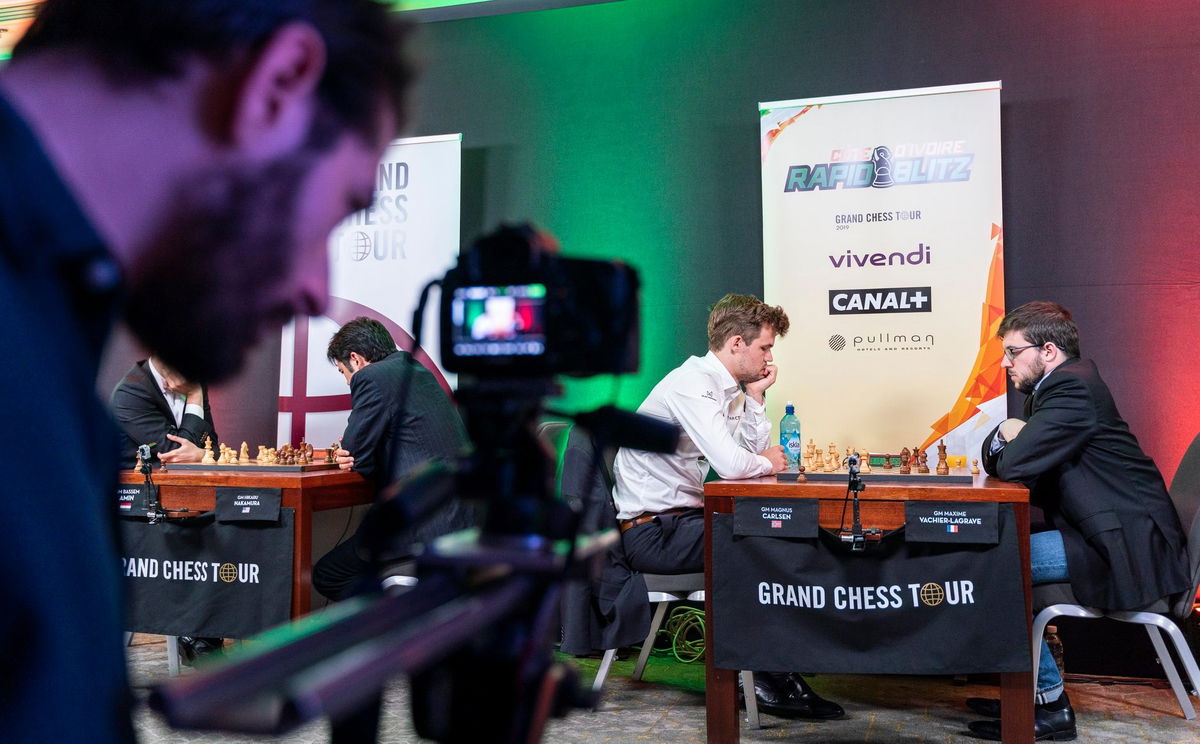
Carlsen-MVL
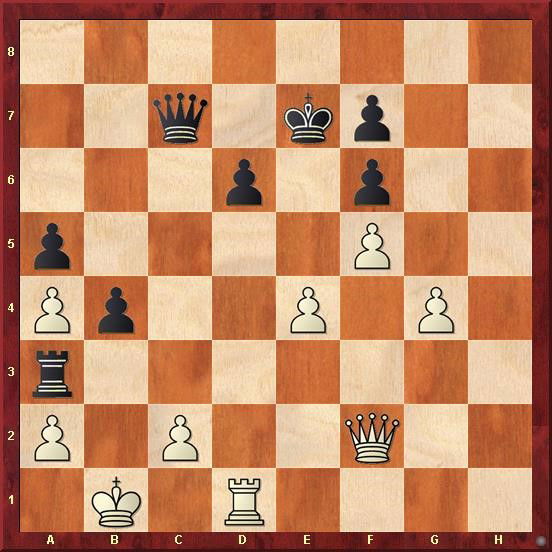
Black to play here blundered with 33...Rxa4??, a terrible miscalculation allowing 34.g5!, after which the game is finished due to the terrible weakness of the Black king. Instead, 33...Qc5! drives the game towards a draw, as White has no option but to exchange queens. A big game for both players, as Magnus again benefitted from better physical shape to take advantage of his opponent’s errors and extend his lead.
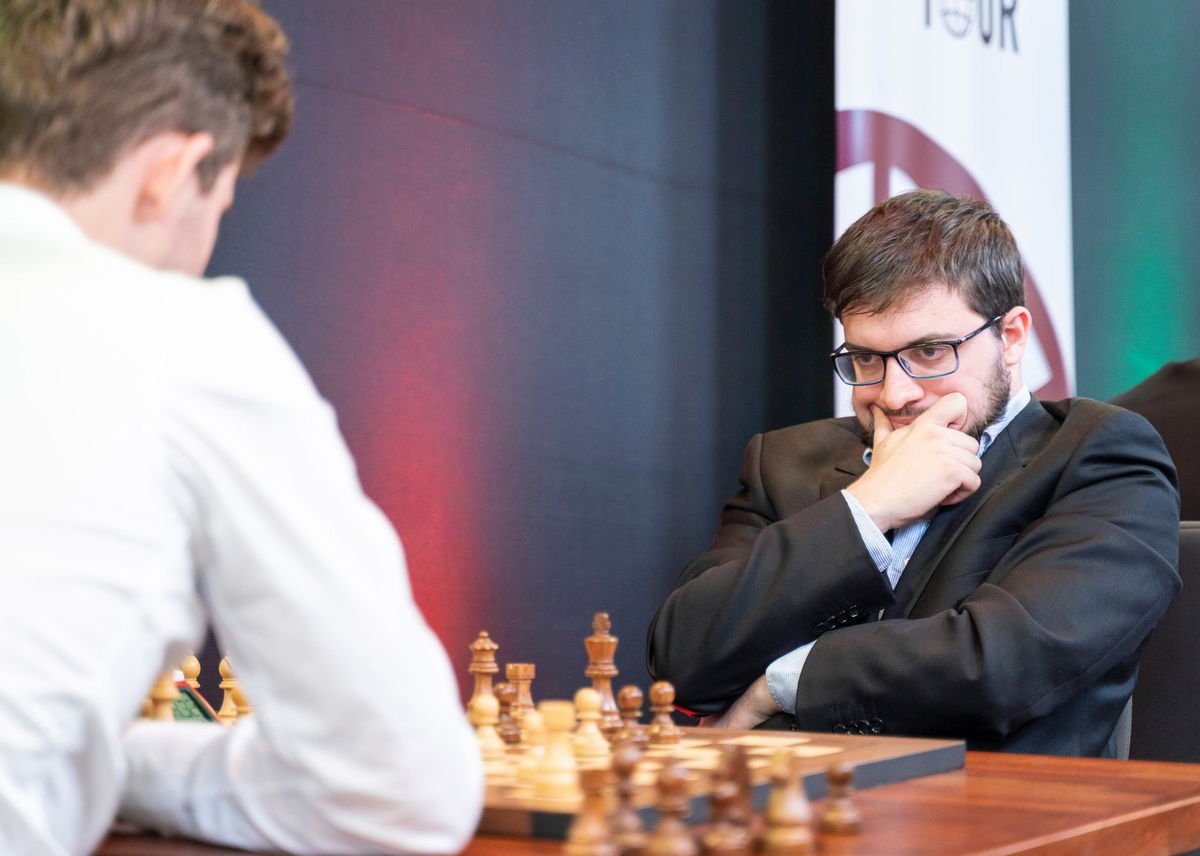
Bassem Amin vs Hikaru Nakamura
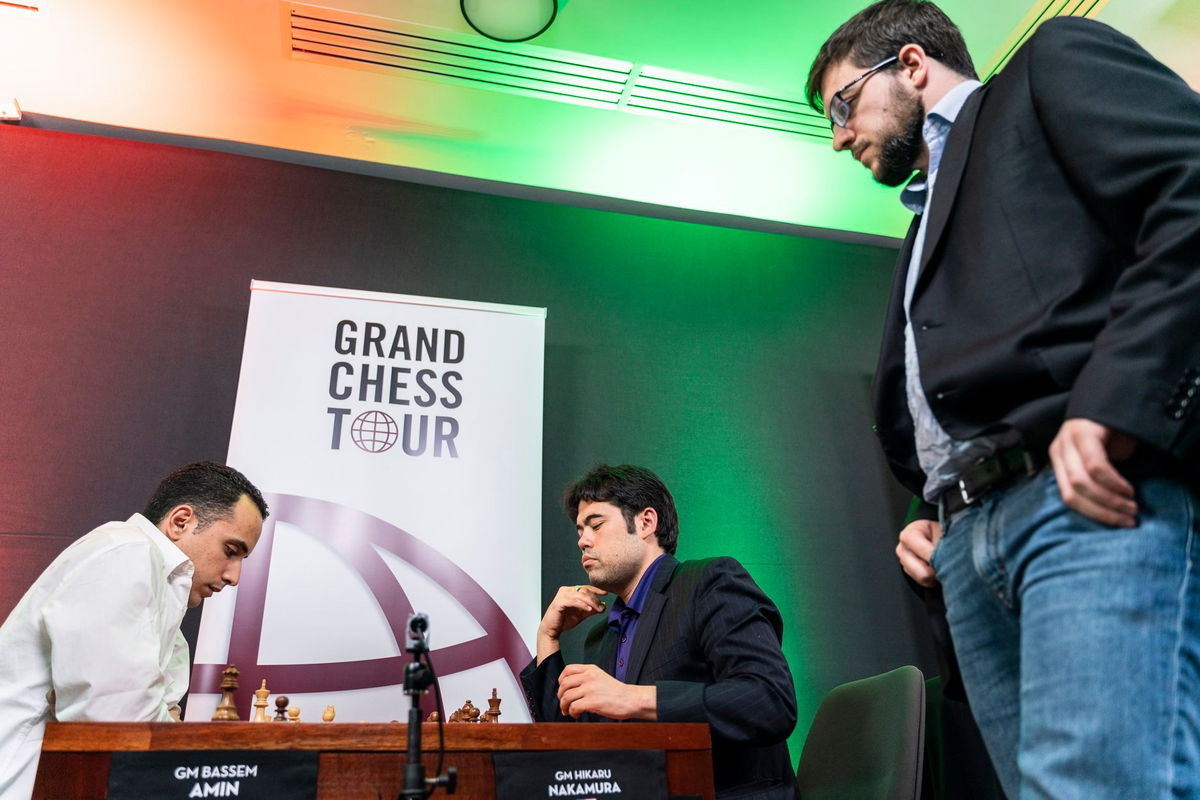
Baseem Amin finally ended his streak of 4 losses by swindling Hikaru Nakamura. In a King's Indian Attack against Naka’s Sicilian, Amin overpressed as White and ended up in a dead lost position. However, no game is lost till one player resigns or is checkmated. Naka failed to take the best chance available to him, and it was only downhill for him after that:
Amin-Nakamura
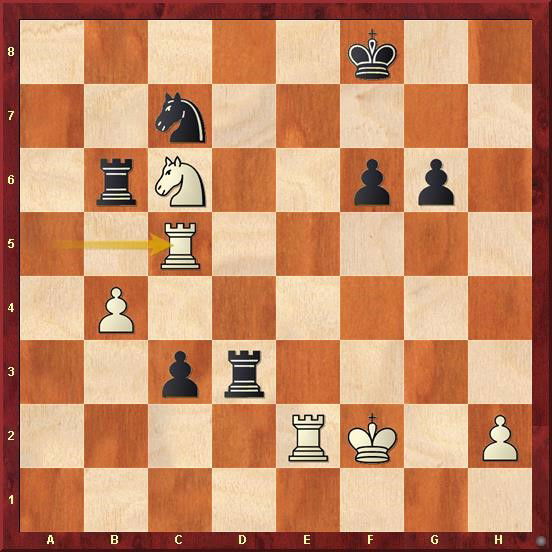
Here Naka inexplicably played 43...Ne8? (Time trouble maybe?) and overlooked 44.Ne7! after which White is more or less fine. Amin took charge of the game here, and despite further inaccuracies won his first game of the event. It would have all been different had Naka played 43...Rb5!-+, which kills further resistance, as the c-pawn is too strong. A huge blow to Naka’s chances of taking the lead, but one has to raise his hat to Amin for never giving up!
Ding Liren vs Ian Nepomniachtchi
Ding Liren-Nepo was an f3 Benoni (at last, people are appreciating what a good opening it is!) where Black easily equalised from the opening, following a plan I had recommended in Ding - Grischuk from Shamkir. After Black broke with b5, the game swung in his favour, but Nepo missed a big chance to improve his position further:
Ding-Nepo
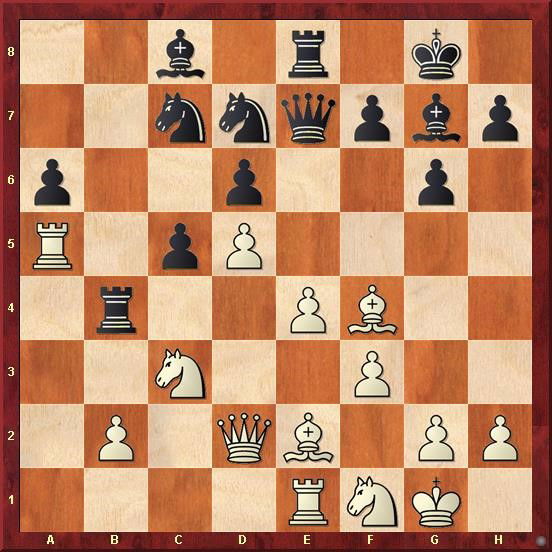
Nepo unnecessarily gave up a pawn with 19...Nb5?! While giving pawns is natural in the Benoni, here White hasn’t suffocated black to take such extreme measures. Instead, 19...Ne5! is much stronger. This is another typical move in the Benoni. Black has a variety of plans available, the best being a future Nc4! to target the b2 weakness. The computers usually underestimate Black’s chances in this opening, but even they begin to recognise the trouble White is in here. Black could have even gone on to win the game using momentum alone.
The remaining two games were solid draws, but on deeper inspection Wei Yi could have improved White’s play against Wesley So:
Wei Yi - Wesley So
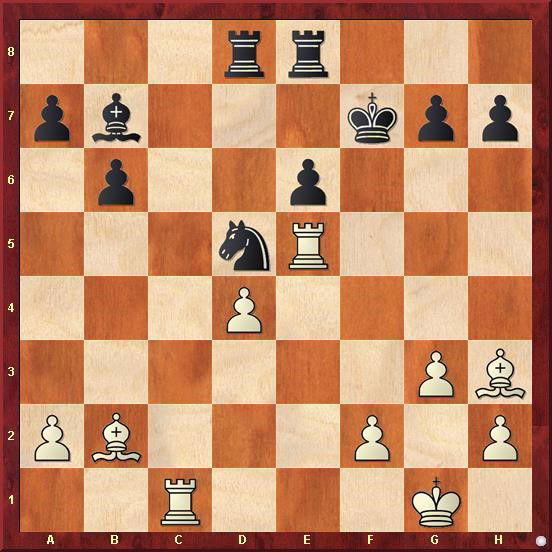
Here Wei Yi has slightly outplayed Wesley So in an Open Catalan. White has more space, and his IQP is more a strength than a weakness. Here, Wei played the artificial 24.Ba3?! after which White has some play, but not enough to claim an advantage. Instead, 24.Rce1! was far more natural, ganging up against the e6 weakness. This grants White a small but stable advantage, and an enduring initiative, two invaluable assets in a fast game.
Topalov-Karjakin was a Ragozin Defense that never left the realms of equality from the opening. Both players thus successfully recovered from their previous round losses.
Round 6:

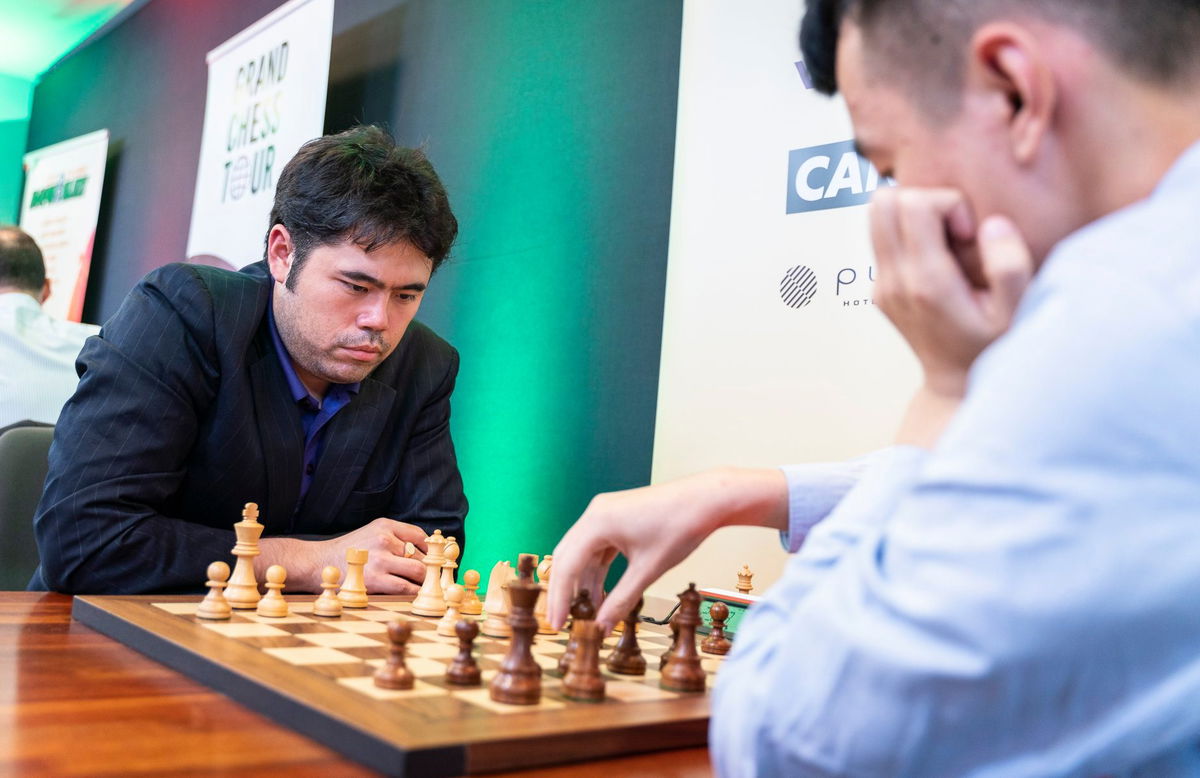
Naka won his game this round against a tired Ding Liren, taking full advantage of the latter’s inaccurate play in the complex middlegame. The players explored an Anti-Marshall Line that Naka had tried yesterday as well, and to my eyes Black had successfully equalised out of the opening. However, 0.00 doesn’t necessarily mean dry equality, and Naka showed us all how to handle such positions. The critical position arose on move 28:
Hikaru Nakamura - Ding Liren
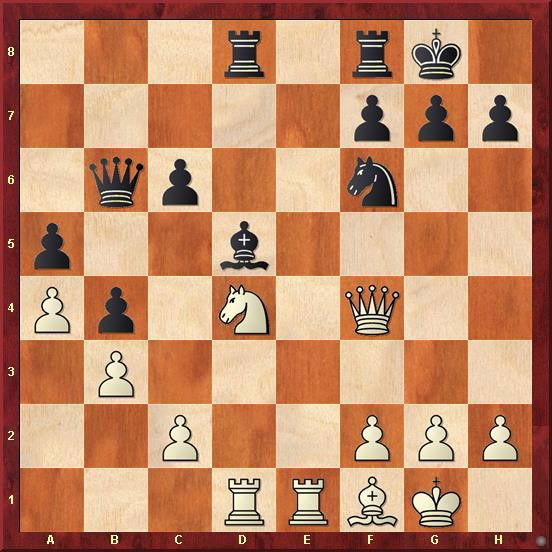
White in my opinion has only an optical advantage. With the precise 28...Rde8! Ding could have completely equalised chances, trading White’s best piece – the e1 rook. Instead, 28...Be4? was a bad miscalculation, and after 29.Rxe4! Naka forcibly liquidated to a two pieces vs Rook endgame that he confidently converted into a win. The point that Ding Liren missed was that after Rxe4 Nxe4 Qxe4 c5 doesn't work because of Bd3! threatening a mate and breaking the pin!
Magnus Carlsen vs Veselin Topalov

Magnus Carlsen faced the out of sorts Veselin Topalov, and decided to essay the Scotch as a change from his pet English and Ruy Lopez lines. The players went into the ancient realms of the Scotch 4 Knights, and Magnus could only claim an academic advantage after Veselin’s precise play in the opening. However, it all changed on move 17, after Veselin’s subtle inaccuracy 17...Re8(?!) (17...Ne5! was much stronger, as the rook can also be used from f8 in a kingside expansion- Black should have little trouble holding the draw there).
Carlsen-Topalov
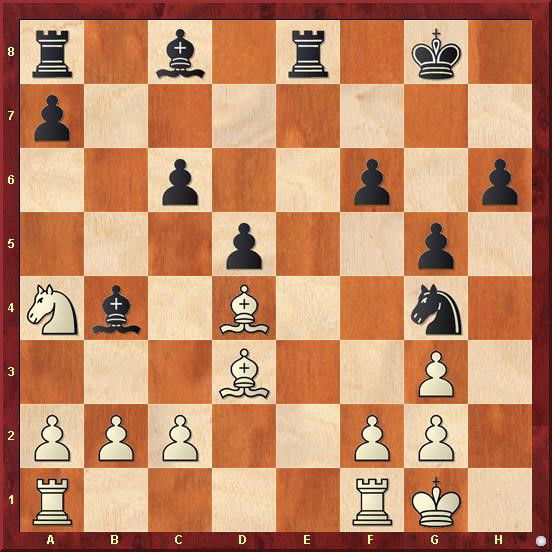
Magnus played the ambitious 18.f4?! trying to force open the f-file and break through. However, all this did was simplify into a slightly worse major piece endgame that he efficiently held. Instead, the far more natural 18.c3! should have been preferred. White solidifies his hold on the dark squares and prepares to bring the rook to the e-file. A typical Magnus torture session would have awaited Veselin after this. Instead both players signed the peace treaty after a tiring day.
MVL vs Wesley So

MVL-So was a 4.d3 Anti Berlin that turned into an incredibly sharp battle that resembled some lines in the Archangel. White got the centre, Black got in immense pressure against it. After MVL’s overambitious 16th move Black had a chance to take over the game on move 18:
MVL-So
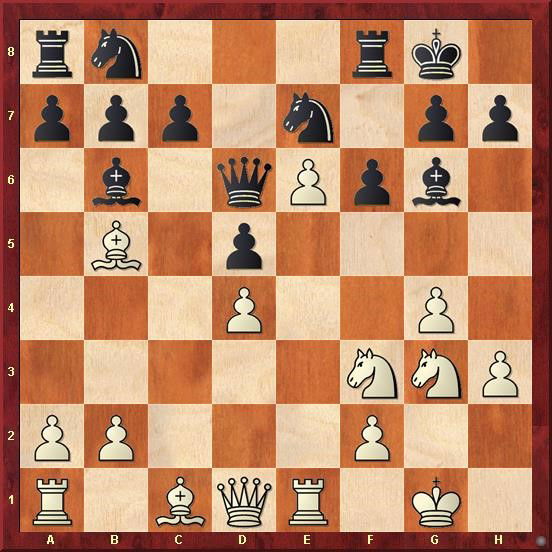
Here Wesley played the developing 18...Nbc6?! that lost whatever small advantage he possessed. During the game, it is really difficult to understand who is better, but had he taken a closer look at White’s overextension, he would have definitely played 18...c5!, targeting the weakness on d4 and successfully freeing his game. Black should then have a tiny advantage, but the game is still very much unclear as far as the players are concerned.
Nepomniachtchi vs Wei Yi

The chance of the round however was definitely with Wei Yi. The Chinese Phenom has impressed one and all with his scintillating play in this tournament, and one wonders if he will be a regular fixture in this tournament come 2020. Against Nepo as Black, Wei first equalised in the Petroff, then systematically outplayed White with his Bishop and Knight against the bishop pair, and by move 32 he had a great chance to increase his advantage:
Nepomniachtchi vs Wei Yi
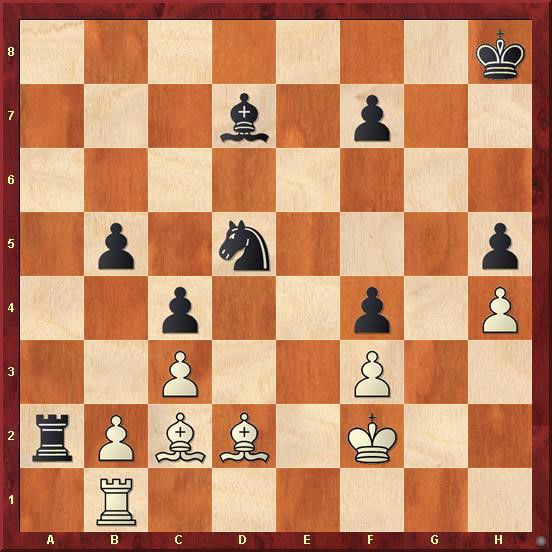
Wei Yi rushed in with 32...b4? that squandered all his advantage. Instead, he had to play for zugzwang with 32...f5! followed by Kg7 and the slow improvement of his position. White is completely asphyxiated here, and it is only a matter of time before Black converts. In the game, Nepo successfully got counterplay and managed to hold a difficult game.
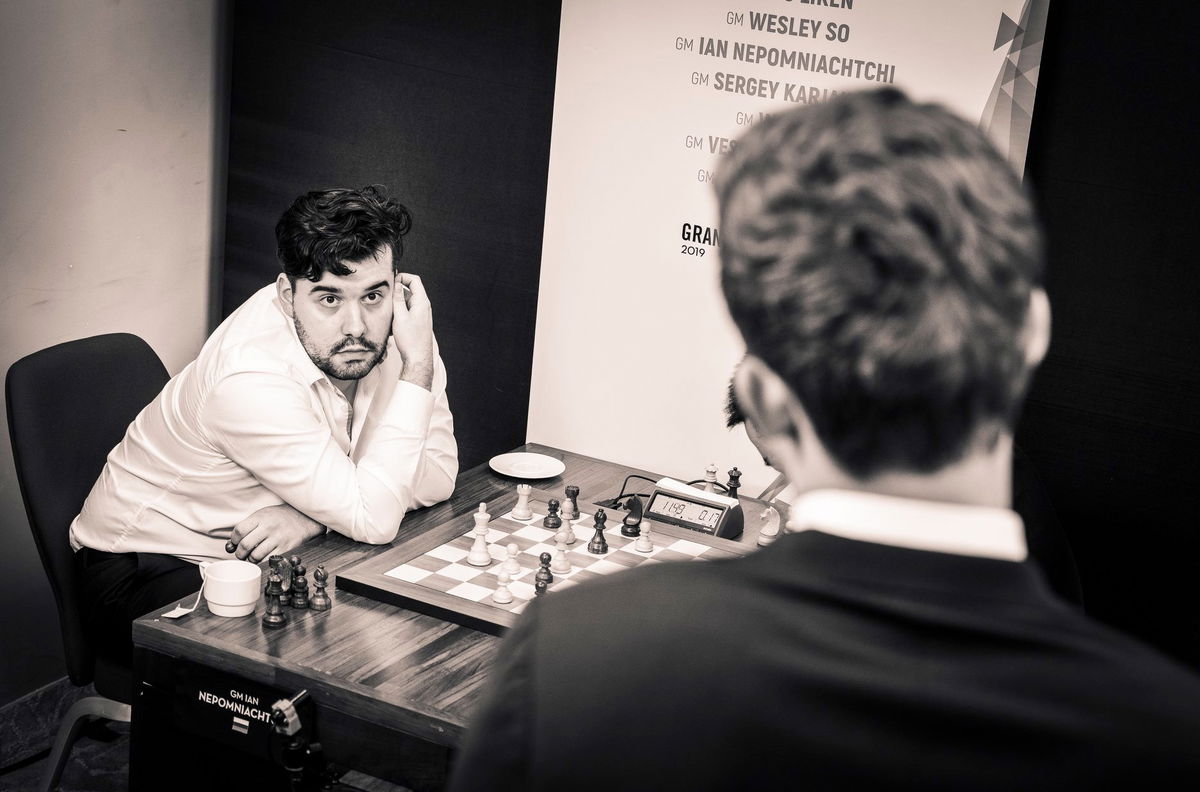
Karjakin-Amin was a Ruy Lopez Breyer where Sergey followed Gashimov-Mcshane till deviating with 19.b4, a novelty in live chess, but played before in correspondence.
Karjakin-Amin (19.b4N)
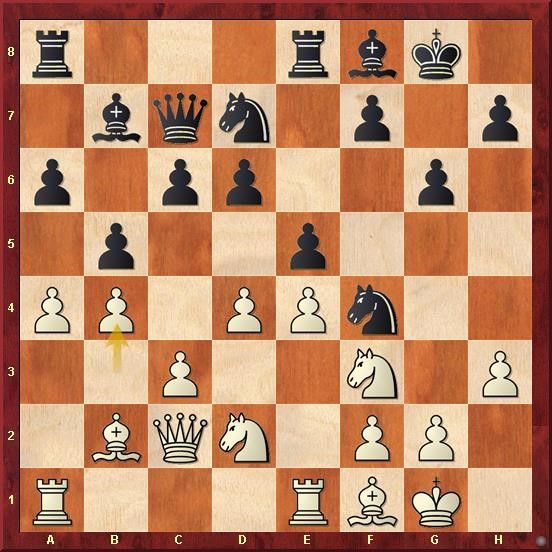
On move 21 the critical position was reached:
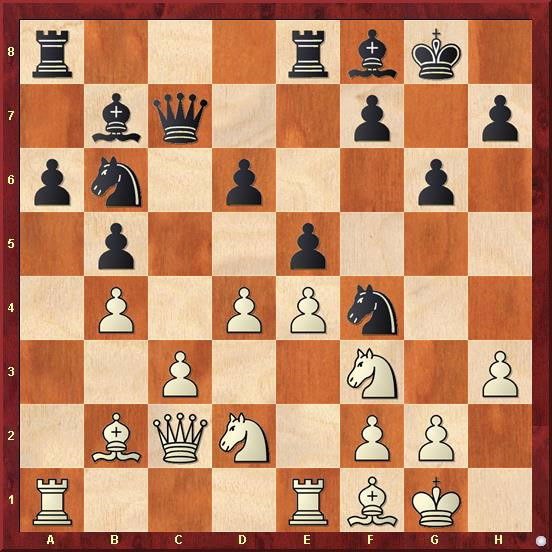
Sergey played the inaccurate 21.Qb3?! frittering away all his advantage, and in fact landing in small trouble. He went on to draw, but the objective of pressing with white wasn’t accomplished. Instead, here 21.dxe5! made a lot more sense. The point of this move is to prepare c4, and try to make some use of the long range bishop sitting idle on f1. The game might end in a draw, but this was White’s best chance.
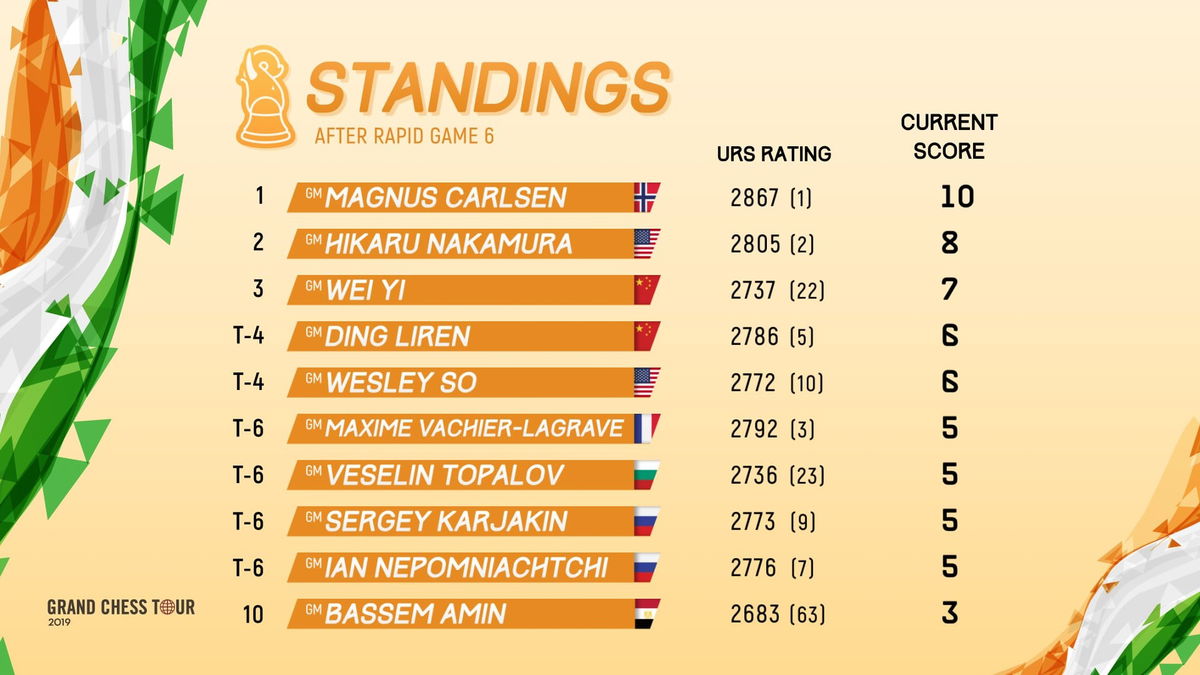
After 6 Rounds Magnus Carlsen leads with 10.0/12. He is in pole position to win the Rapid Tournament, but don’t discount his challengers - Naka and Wei Yi are the closest ones, but even 9th place still has a theoretical chance to win - it is going to be a fun final day!
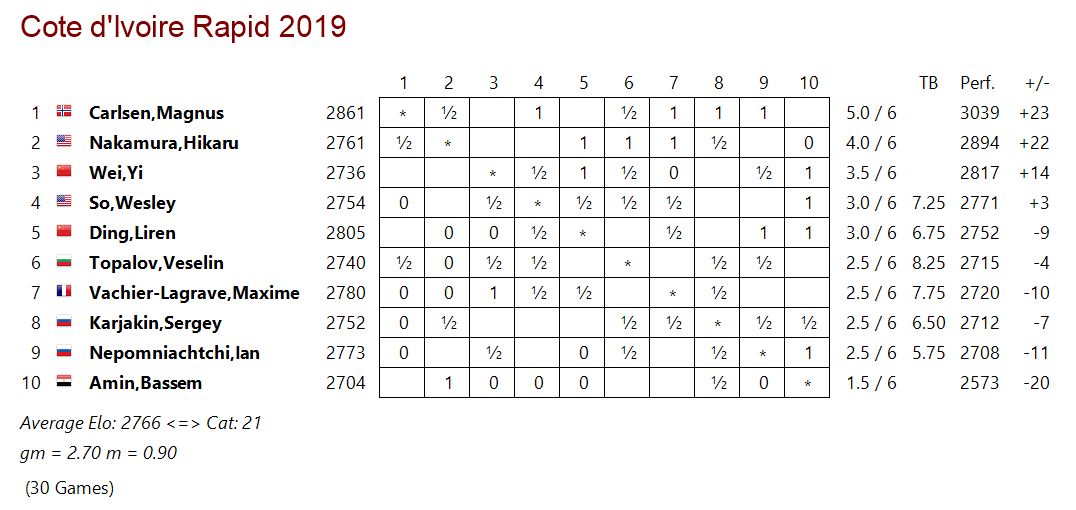
About the author:
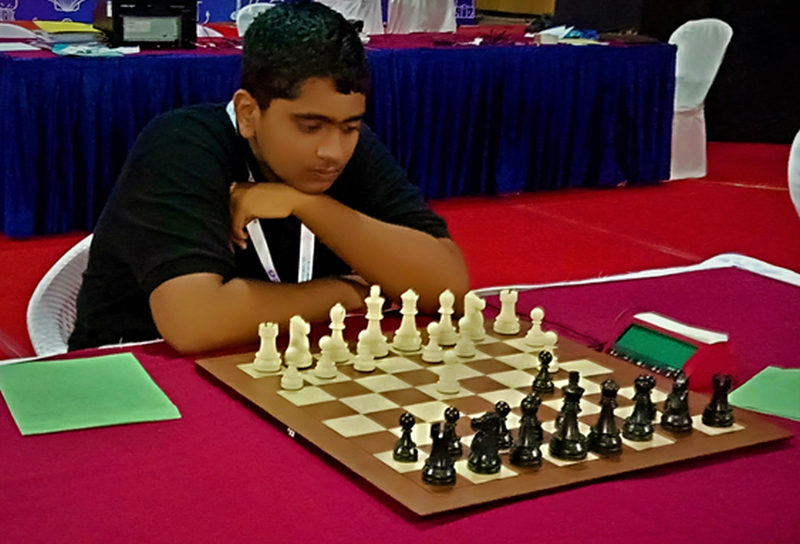
Tanmay Srinath is an 18-year-old chess player from Bangalore, Karnataka, currently pursuing both chess and engineering at BMSCE Bangalore. Tanmay is also a Taekwondo Black Belt, who has represented the country in an International Tournament in Thailand. He is a big fan of Mikhail Tal and Vishy Anand, and sincerely believes in doing his bit to Power Chess in India!




















